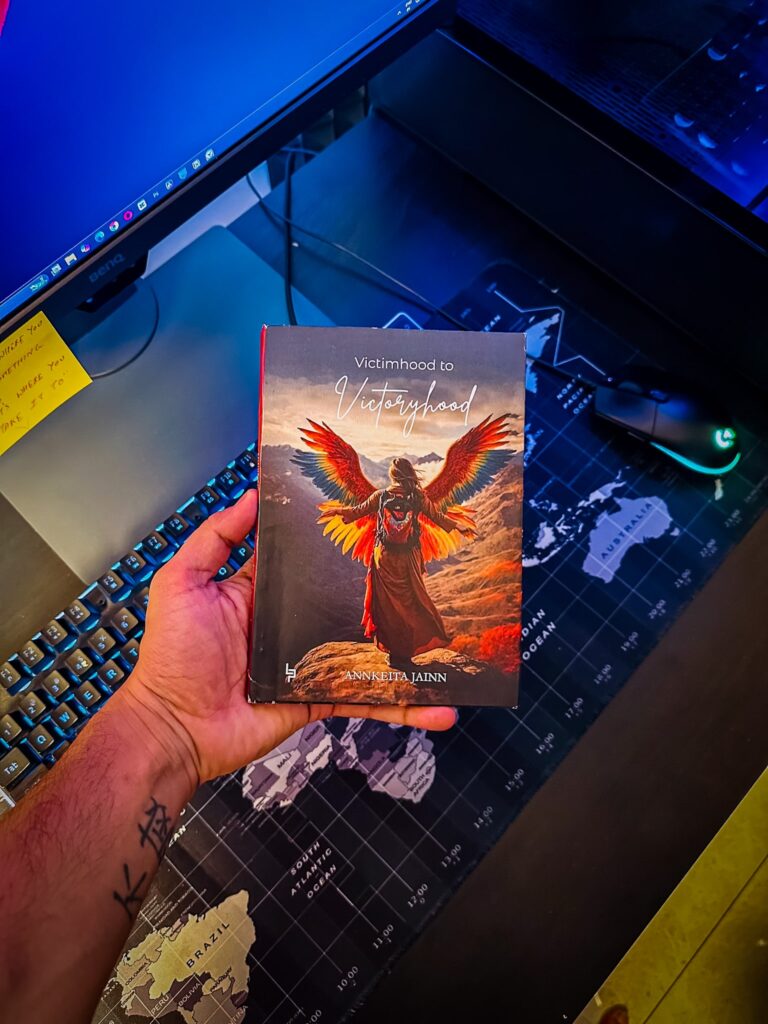Physical Address
304 North Cardinal St.
Dorchester Center, MA 02124
Physical Address
304 North Cardinal St.
Dorchester Center, MA 02124

Victimhood to Victoryhood is far more than a simple memoir; it is an incredibly human and candid account of one woman’s arduous, non-linear journey toward self-discovery, resilience, and true empowerment . Writing with a distinct voice that balances vulnerability with unflinching honesty, the author invites the reader to witness the transformation that occurs when deep-seated societal pressures clash violently with personal aspirations.
The author begins by sharing the heavy burdens of her early life. Despite achieving popularity in school, she reveals a constant internal struggle fueled by the pursuit of academic perfection—chasing every decimal point on her scorecard—which severely impacted her mental well-being. Simultaneously, she endured relentless bullying, largely due to her height and the cultural complexity arising from having a South Indian mother and a North Indian father. These challenges, though painful, are framed not as endpoints but as the foundational “seed” from which a sturdy future was built.

A crucial turning point arrives when the author begins to pivot from viewing her unique attributes as flaws to seeing them as assets. This shift, particularly regarding her height, coupled with a yearning for independence, fueled her successful transition to dorm life and later, to a designing institute in Delhi. It is in this environment that she actively started cultivating her self-expression, discovering powerful outlets like basketball, where her height was finally an advantage, and jazz dancing, which became a profound medium connecting her body and spirituality. She is admirably open about the initial struggles of fitting into a more sophisticated world, where she found many peers lacked the authenticity she valued, leading her to commit intensely to personal growth and studying.
The narrative keenly explores the tension between individual dreams and the powerful pull of conventional expectations. The author recounts securing an impressive campus placement with a substantial salary, even crafting an audacious plan to retire by age 30, which showcases her meticulous determination. However, this ambition frequently clashed with familial protective instincts and societal norms surrounding a woman’s role and marriage timeline. The chapters detailing the experiences of conventional matchmaking are particularly jarring, emphasizing the dehumanizing reality of being scrutinized “like a product on display” by potential in-laws, inspected for superficial traits rather than capabilities or genuine connection.
While the author avoids graphic spoilers about the ensuing marriage, she makes it clear that yielding to pressure resulted in an immensely dark chapter marked by abuse and the forced forfeiture of her professional career. Yet, even in this hardship, she finds a profound catalyst for change through motherhood, noting that her son, Arnav, ultimately propelled her toward seeking liberation.
The latter half of the book is a testament to the arduous, multi-year process of rebuilding. She speaks frankly about the emotional toll of legal battles, the devastating loss of tangible memories (certificates and photo albums), and the critical role of unwavering support from friends and family, whom she credits for providing an invaluable anchor. The path to “Victoryhood” is rooted in a pivotal realization, spurred by a moment of utter desperation, where she recognized the necessity of taking 100% responsibility for her own life and trajectory.
The book concludes on a note of profound healing, detailing her spiritual journey and the transformative solace she found in the majestic mountains of Himachal. Having moved past the victim mentality, she embraces the “Goddess Energy”—a philosophy focused on applying wisdom, managing emotions responsively, and radiating positivity, all while holding the belief that her inner strength and self-love supersede external judgment. Victimhood to Victoryhood serves as a powerful reminder that growth is a continuous process, defined by resilience, self-discovery, and the commitment to nurturing a foundation that stands the test of time.